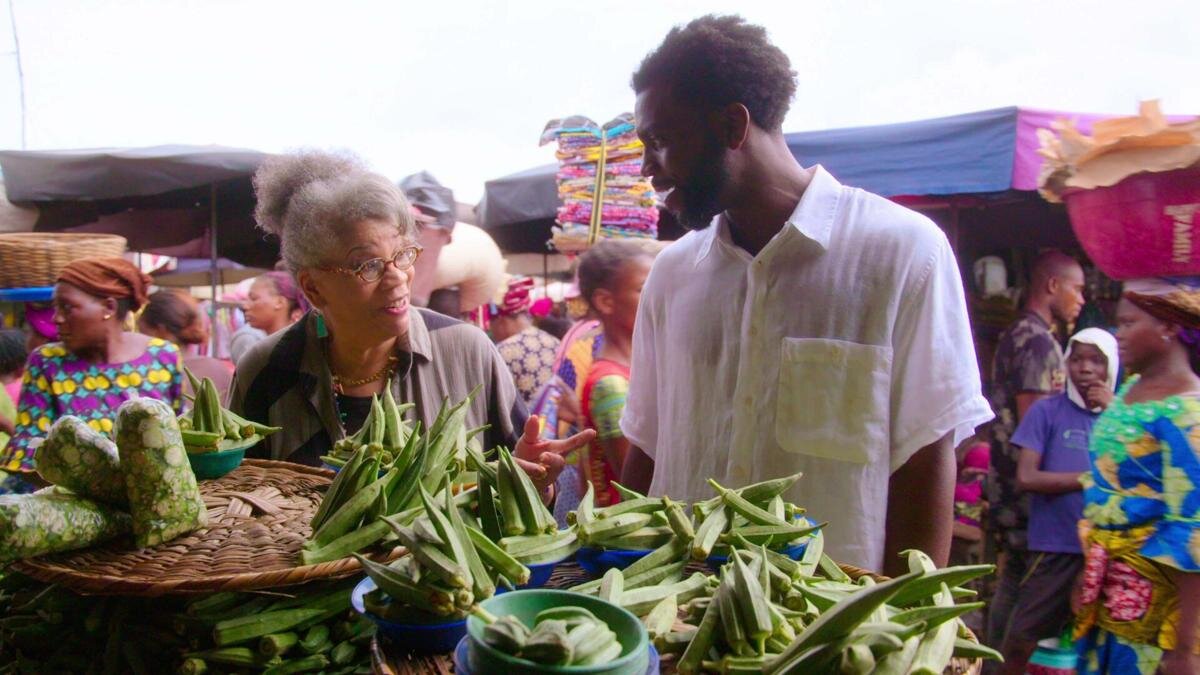In Case You Missed It: “High on The Hog: How African American Cuisine Transformed America”
First off, we should say that Netflix’s docuseries “High On The Hog: How African American Cuisine Transformed America” was released back in May of this year. But if you still haven’t seen it, we are enthusiastically telling you to GO AND WATCH IMMEDIATELY! In our opinion, this series, created by an all-Black team of makers and directed by Roger Ross Williams, should be curriculum. It’s not your ordinary food show or travel show, it’s a deep and complicated dive into the heart of American Cuisine through the lens of Black foodways. The series was just this month renewed for a second season, so we are not the only ones who feel the urgency of this story.
The series is based on New York Times’ best seller “High on the Hog: A Culinary Journey from Africa to America by lauded culinary historian, author and James Beard Lifetime Achievement Award winner, Dr. Jessica B. Harris, who is featured in the series. Through an artful and complex balancing act, host Stephen Satterfield (muti-hyphenate media entrepreneur, journalist, chef and sommolier) grapples with the effects of the transatlantic slave trade, how it not only shaped African American food culture, but how it truly defines American food culture as a whole.
In episode one, “Our Roots,” Satterfield brings us to meet Dr. Jessica Harris in Benin, a bio- and culturally diverse coastal nation of West Africa that was also home to one of the largest and most significant ports to slave traders of the middle passage.
Dr. Harris guides us through one of the largest open-air markets in West Africa, the Dantokpa marketplace, brimming with bright colors, smells, sounds and histories. There we discover “gombo” (okra), the “yams” (spoiler alert - they’re not the same as sweet potatoes!), black eye peas, fava, watermelon, rice and more. We know these ingredients as foundational to American food, and yet Benin was a point of origin for all.
Satterfield and Dr. Harris reflect on the reach of Benin’s cuisine, from pre colonial mangni mangni (a steamed paste of blackeyed peas with red palm oil) and kan nan (fermented corn dough steamed in banana leaf) presented by artist Romuald Hazoumè to amiwo (a traditional corn and tomato dish similar to grits or polenta) or peanut sauce by cookbook author and restaurateur Valerie Vinakpon.
We even glimpse inside the more experimental kitchen of Chef Sedjro Ahouansou whose contemporary take on a traditionally savory cassava-based dish is instead offered as a sweet bite. “Pirron Maki” as Ahouansou calls it, features locally available pineapple and coconut in a shape inspired by Japanese sushi presentation, modelling the potential for both narrative and technical innovations.
This docuseries does an incredible job at introducing us to the roots of many ingredients and recipes. But at the same time the series bravely unfurls a chilling history of slavery we cannot ignore. In a deeply emotional scene, Dr. Harris brings Satterfield to Benin’s Door of No Return, a haunting monument in honor of the more than one million people deported from the port of Ouidah as slaves.
As artist Hazoumè proclaimed earlier in the episode with regard to that monument, “It’s where they leave. But at that time, they didn’t know where they were going. That’s where you have a Gate of No Return. We have a chance of return. That’s what we are all doing now. This is our return.”
This brilliant series is hitting the reset button for us. In episode one, it celebrates the heretofore hidden dishes, ingredients, and traditions of Benin (and more broadly West African) pre enslavement. It preserves a complicated and problematic history of provenance, resistance, love and survival through unforgettable food experiences. And, again, this is just in episode one.
In the three successive episodes of the first season, we are introduced to culinary worlds all stateside, from Gullah cuisine to Texas Barbeque, from the kitchen of James Hemmings (formerly enslaved by Thomas Jefferson) to that of Jerrelle Guy. So get watching! And please be sure to check out Dr. Jessica B. Harris’s foundational work. And let’s all get excited for season 2.
For a full list of locations visited in S1:E1 please visit Black Culinary History.



